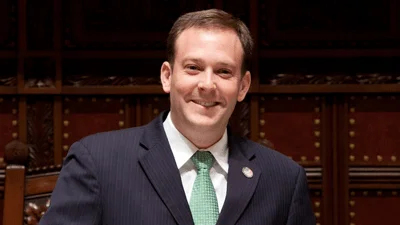In a recent interview, Kerry White of Citizens for Balanced Use urged landowners to be wary of a proposed plan to create a vast conservation area in Montana, which he claims would increase federal government control over the land and would prioritize wildlife over local residents' access to the land.
"American Stewards has done extensive research on the Biden 30 x 30 plan and the designation of massive swaths of land as conservation areas under the disguise of protecting open space and wildlife connectivity when in fact this effort is for more federal government control and federal land acquisition," Kerry said in an interview with Federal Newswire.
On September 20, the U.S. Fish and Wildlife Service (USFWS) unveiled a proposal to establish a vast 5.8 million-acre conservation area in the southwestern region of Montana, covering an expansive area of 9,000 square miles, as reported by the American Stewards of Liberty (ASL).
According to ASL, the planned Missouri Headwaters Conservation Area (MHCA) consists of 3,742,220 acres of government-owned land and 2,050,420 acres of privately held land. The state of Montana possesses 500,000 acres within this designated region; however, the USFWS initiated this plan without prior notice to or collaboration with the Governor or the Attorney General.
The USFWSs promotes conservation areas to establish wildlife corridors, enhance climate resilience, and safeguard ecosystems on a broader scale, ASL says. The agency emphasizes the voluntary involvement of landowners, aiming to maintain working lands while preventing development. Additionally, they promise continued access to recreation, seeking support from the recreational community. However, the permanent designation of conservation areas allows the USFWS to manage them under the National Wildlife Refuge system, leading private landowners to question when they may be asked to participate voluntarily.
White says that the designation will be done without local support and is a guise for increased federal government control and land acquisition. He says that the plan seeks to remove people from the land and elevate the priority of wildlife over human presence, which will impact access to critical resources, decrease tax revenue, and affect essential services. This, in turn, could lead to increased dependence on foreign nations for critical resources, affecting local economies and small communities reliant on various industries like agriculture, timber, mining, and oil and gas development.
"When access to our public lands and resources is removed or curtailed, dependence on foreign nations for our critical minerals and resources increases. Many of these foreign countries are not favorable nations," White said.
According to White, the plan is a threat to mineral exploration and development in the area. He has concerns about increased litigation by environmental organizations leading to further restrictions on mining and timber activities, which could result in the loss of jobs and economic stability for the region. The potential loss of federal grazing permits could also significantly impact ranch operations and local economies.
"In Montana, we have seen a downward pressure on resource development, including mining and timber, through litigation by environmental organizations, White said. "The counties located in this area are becoming more dependent on outdoor recreation to survive, but the federal land management agencies have continued to close access to these public lands."
ASL's announcement of this 5.8 million-acre conservation area proposal notes the dangers that could be associated with it, including federal control over private lands, lack of local input, economic consequences, environmental study details, and mineral exploration restrictions. Additionally, the potential categorization of the area as a "Hybrid Area" and the involvement of international investors through a "Natural Asset Company" (NAC) may raise questions about foreign interests and financial gains at the expense of private landowners.
When asked about the pitfalls that these NACs pose, White says that these out-of-state investors lack a local connection and understanding of the area and have restricted access to areas that were previously available to the public.
"They have installed locked gates to prevent access to our public lands on roads that were historically open and used but never formally recorded, or in many cases, the records were lost or not easy to find. Many have resulted in long court battles," White said.
According to White, there is strong local opposition to the MHCA plan, the potential categorization of this conservation area as a Hybrid Area, and the involvement of international investors and countries in acquiring interests within it.
"The three public meetings that have been held in Montana by the USFWS have been attended by hundreds of people, the vast majority of which have voiced strong opposition to the MHCA," White said. "While the USFWS and their NGO partners responsible for writing the plan have claimed strong local support, the attendees of these three meetings tell a completely different story. This plan is not supported by local residents, local governments or even state government agencies. This flawed plan is a top-down overreach by the USFWS. The USFWS and their NGO partners are deceiving the public in thinking this is a good deal for Montana. Nothing could be further from the truth."
Citizens for Balanced Use fights to keep recreation lands open and available for people for generations to come, according to the organization's website.









